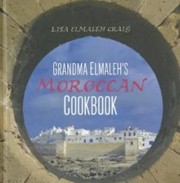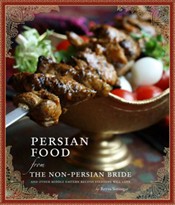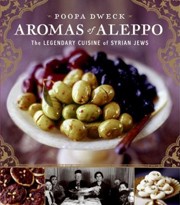Stella Cohen is an heir of the unique Jewish culture and cuisine that thrived on the island of Rhodes from the 1492, when the Jews were expelled from Spain, until the 1940s, when the community was wiped out by the Germans. Cohen’s family was one of the few who escaped, settling in southern Africa, where she was born, and in memory of the community Cohen, a food writer and artist, has collected its recipes in this highly personal book. Cohen laces the history and traditions of the Rhodes community and her family’s history with the Rhodesli recipes and customs that were passed down orally through generations. Illustrated with stunning photographs, including many from Cohen’s family, as well as Cohen’s paintings, the book is both a tribute and a rich collection of recipes.
As with many Jewish cuisines, Rhodes Jewish cooking was influenced by the places where the community had lived —Spain, Turkey, Greece — and regional ingredients. Fried Marinated Fish are cooked on Friday and served for Shabbat lunch; veal appears in many dishes — Leeks and Cannellini Beans Braised with Veal; Veal, Egg, and Herb-filled Potato Croquettes — and the baking section reflects its Mediterranean origins with its varied use of almonds and marzipan, honey, oranges, and apricots. Savory pastries — notably miniature Meat and Rice-filled Pies, topped with sesame seeds — will tempt bakers looking for fresh flavor combinations and challenges. Step-by-step photographic instructions will help with unfamiliar techniques.
Despite its appealing collection of recipes, Stella’s Sephardic Table cannot be truly classified as a cookbook. Its 10 x 12 size and its glorious illustrations rule out heavy kitchen use; its kitchen tips, Ladino sayings accompanying each recipe, and informative back and front matter make it a book for reading and learning about Rhodes as much as a cookbook. For anyone interested in preserving and presenting the vanishing traditions of the once vibrant Jewish Rhodes culture and cuisine, this book is a treasure house. Bibliography, general and recipe indexes, glossary, illustrations, photographs.
Recipe: Almond Semolina Cake Soaked in a Honey-Citrus Syrup
Shamali
For the syrup:
1 cup caster (superfine) sugar
1 cup clear honey
1¼ cups water
1 small cinnamon stick
1 tbsp fresh lemon juice
a 2.5cm (1in) strip of lemon zest
For the cake:
4 eggs, separated
¾ cup caster sugar
½ cup vegetable oil, plus extra for brushing
¾ cup plain (all-purpose) flour
½ cup fine semolina
2 heaped tsp baking powder
170g (6oz) unblanched almonds, finely ground
1 piece of mastic ground with 1 tsp sugar
½ tsp ground cinnamon
For the topping:
30 whole blanched almonds, toasted
You will need:
a rectangular or oval 30 x 22cm (12 x 9in) ovenproof dish that is at least 6.5cml, (2½in) deep
Prepare the syrup: Combine the sugar, honey and water in a small heavy-based pan. Bring to a boil, stirring constantly, until the sugar has dissolved. Add the cinnamon stick, lemon juice and zest. Boil for 5 minutes without stirring. Let cool and discard the cinnamon stick and lemon zest.
PREHEAT the oven to 180ºC (350ºF). Lightly oil the dish and dust with 1 tbsp flour. Place in the fridge.
Make the cake: In the bowl of an electric mixer beat together the egg yolks and sugar on high speed, until pale and thick. Beat in the oil.
IN a medium-sized bowl combine the flour, semolina, baking powder, almonds, mastic and cinnamon.
WHISK the egg whites in a clean bowl until soft peaks form. In two batches, gently fold into the egg and sugar mixture. Then fold in the dry ingredients, scraping down the sides of the bowl, until well incorporated.
POUR the batter into the prepared dish, smoothing it out evenly. Bake in the centre of the oven for 35 minutes or until golden brown and a skewer inserted in the cake comes out clean. Remove the cake from the oven.
REDUCE the oven temperature to 150ºC (300ºF). While the cake is still in the dish, cut deeply into approximately 4cm (1½in) diamond shapes with a sharp knife. Gently spoon the cooled syrup evenly over the entire hot cake. Press a halved toasted almond onto the centre of each diamond shape. Return to the oven for 5 minutes for the syrup to soak in. Serve at room temperature either from the dish or arrange the cut pieces on a cake platter.
Maron L. Waxman, retired editorial director, special projects, at the American Museum of Natural History, was also an editorial director at HarperCollins and Book-of-the-Month Club.





